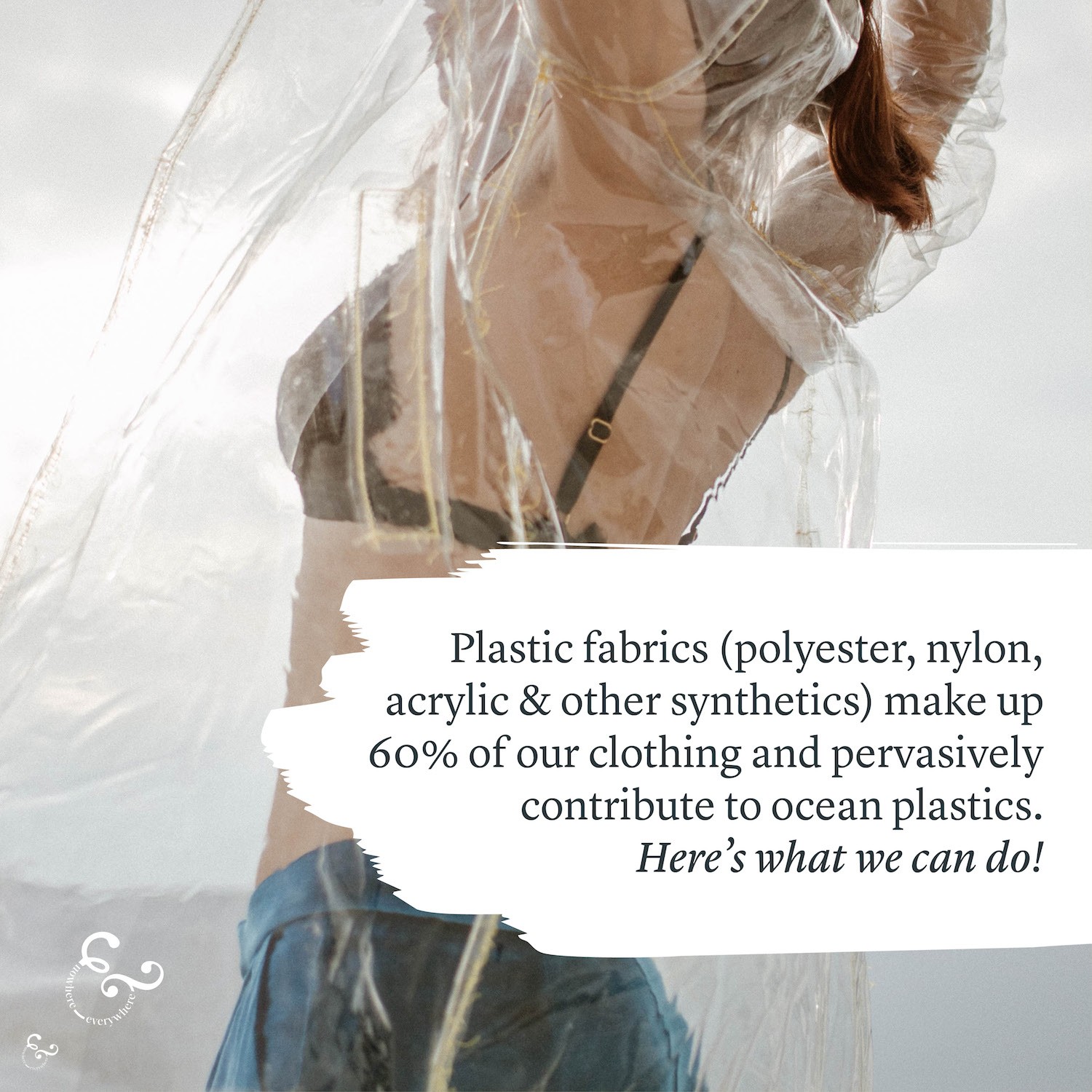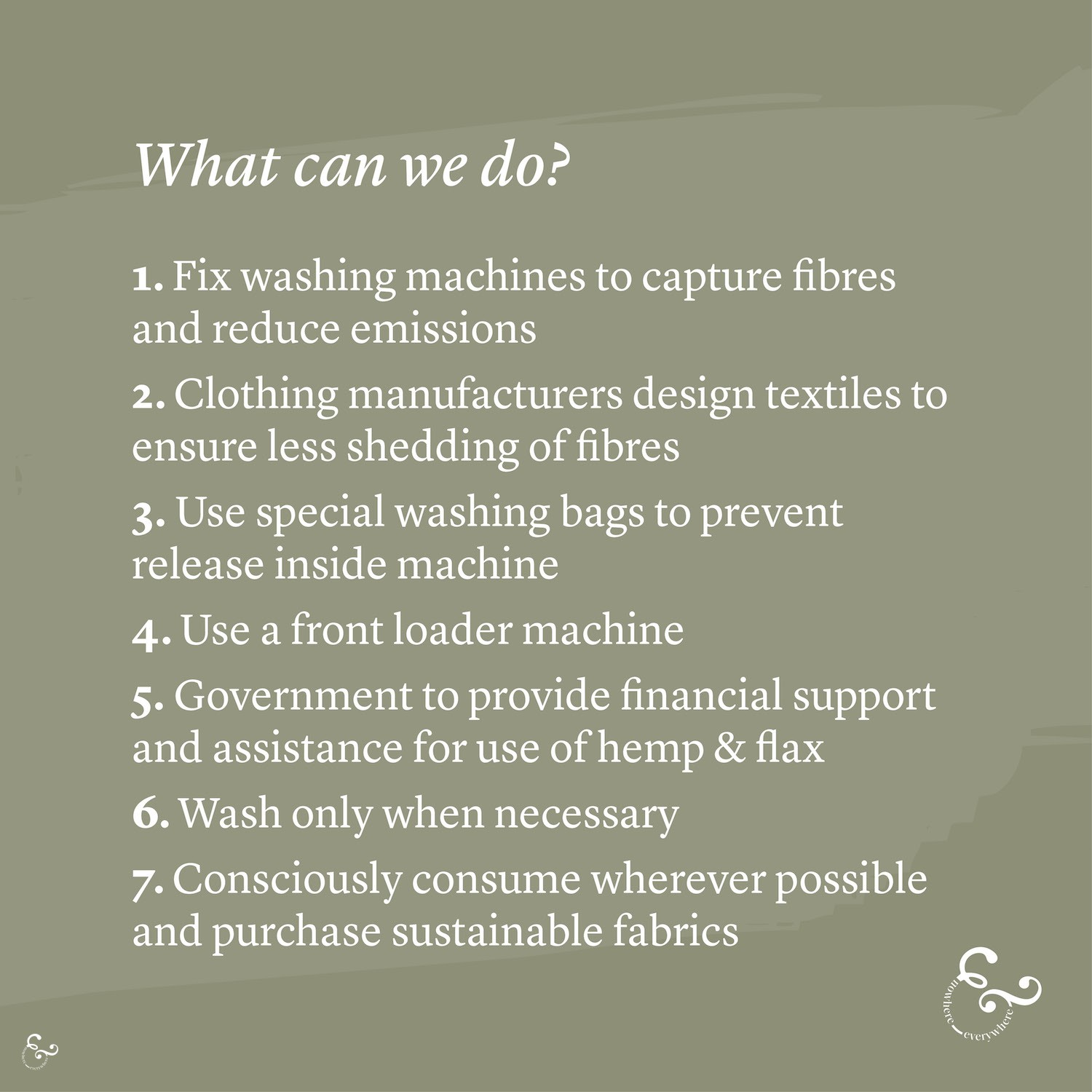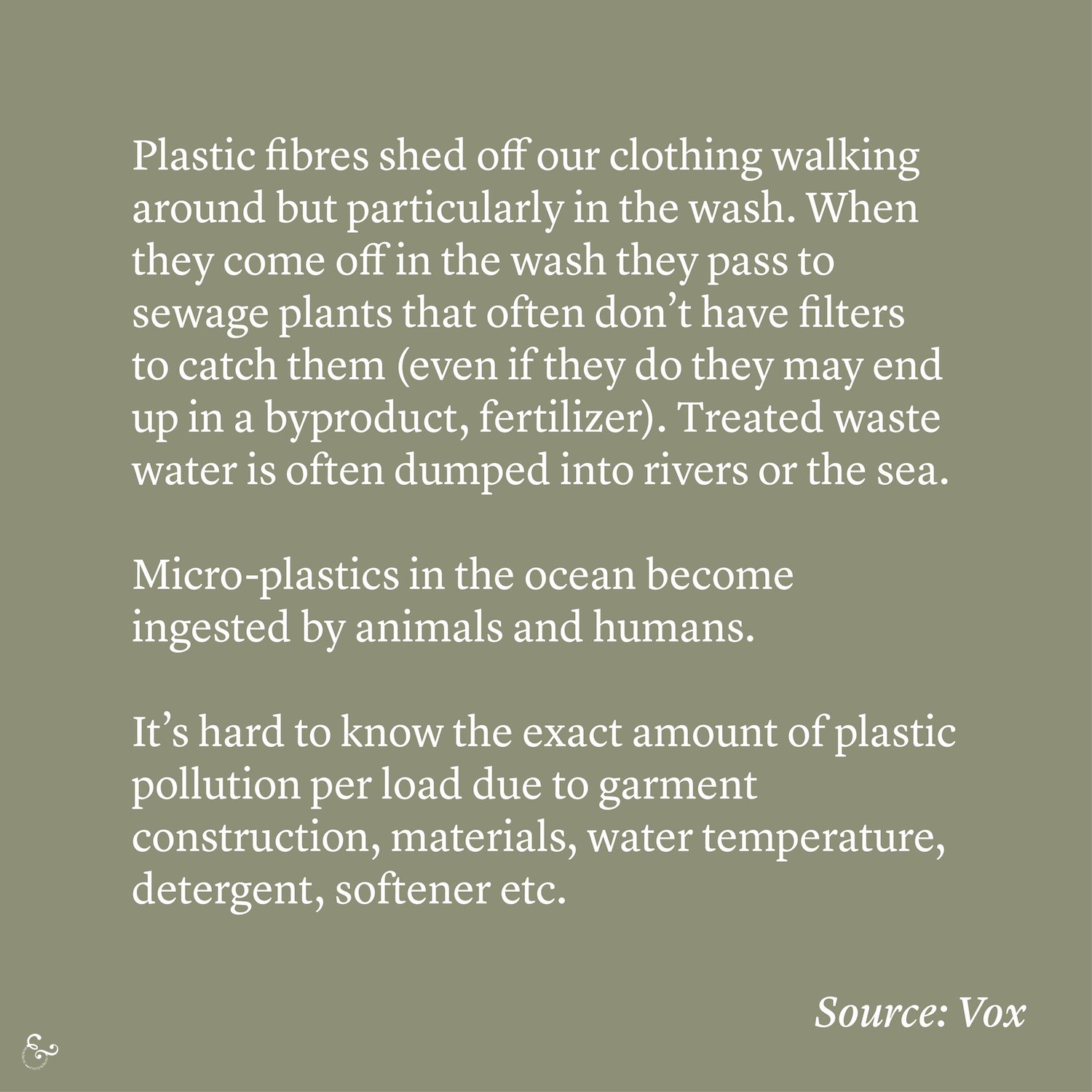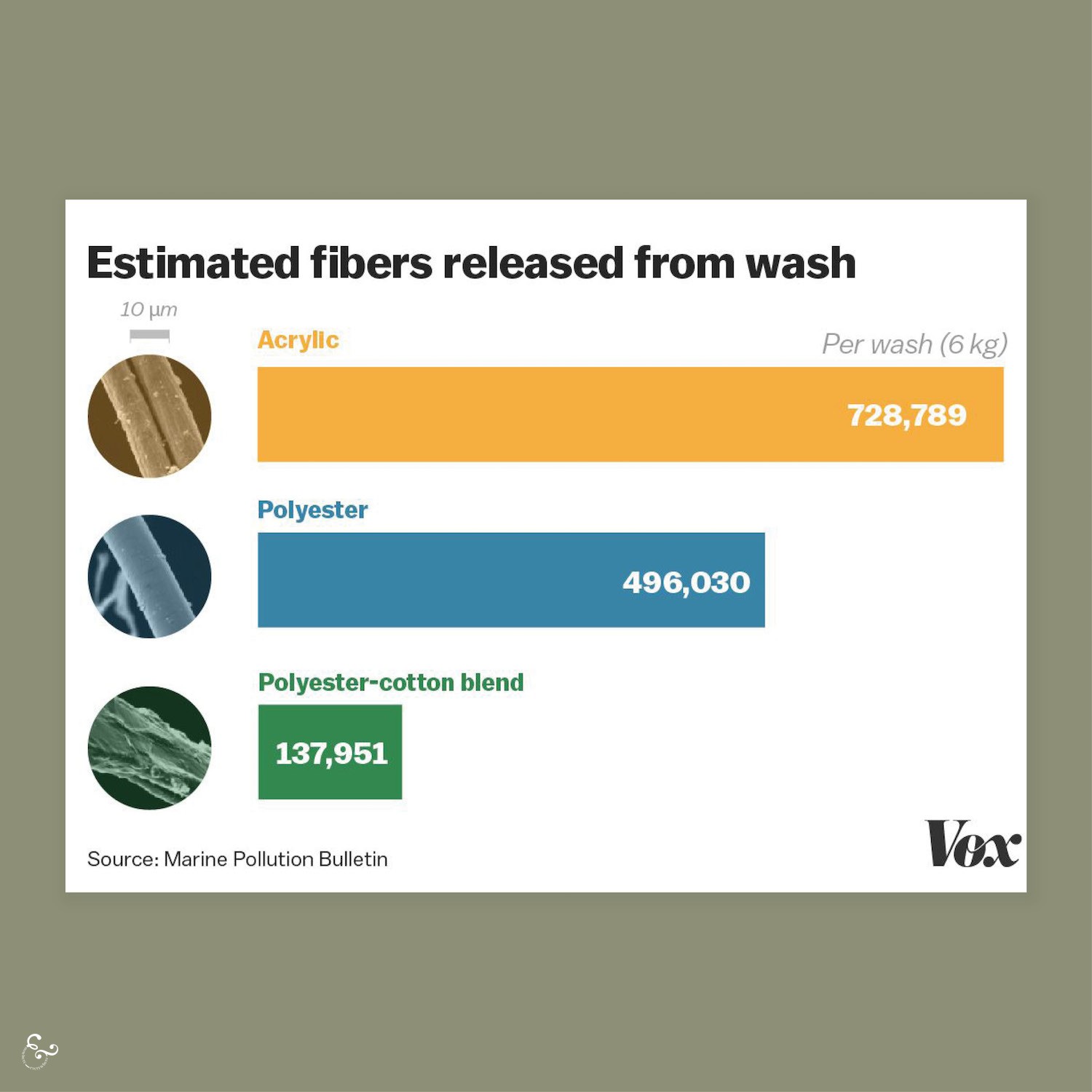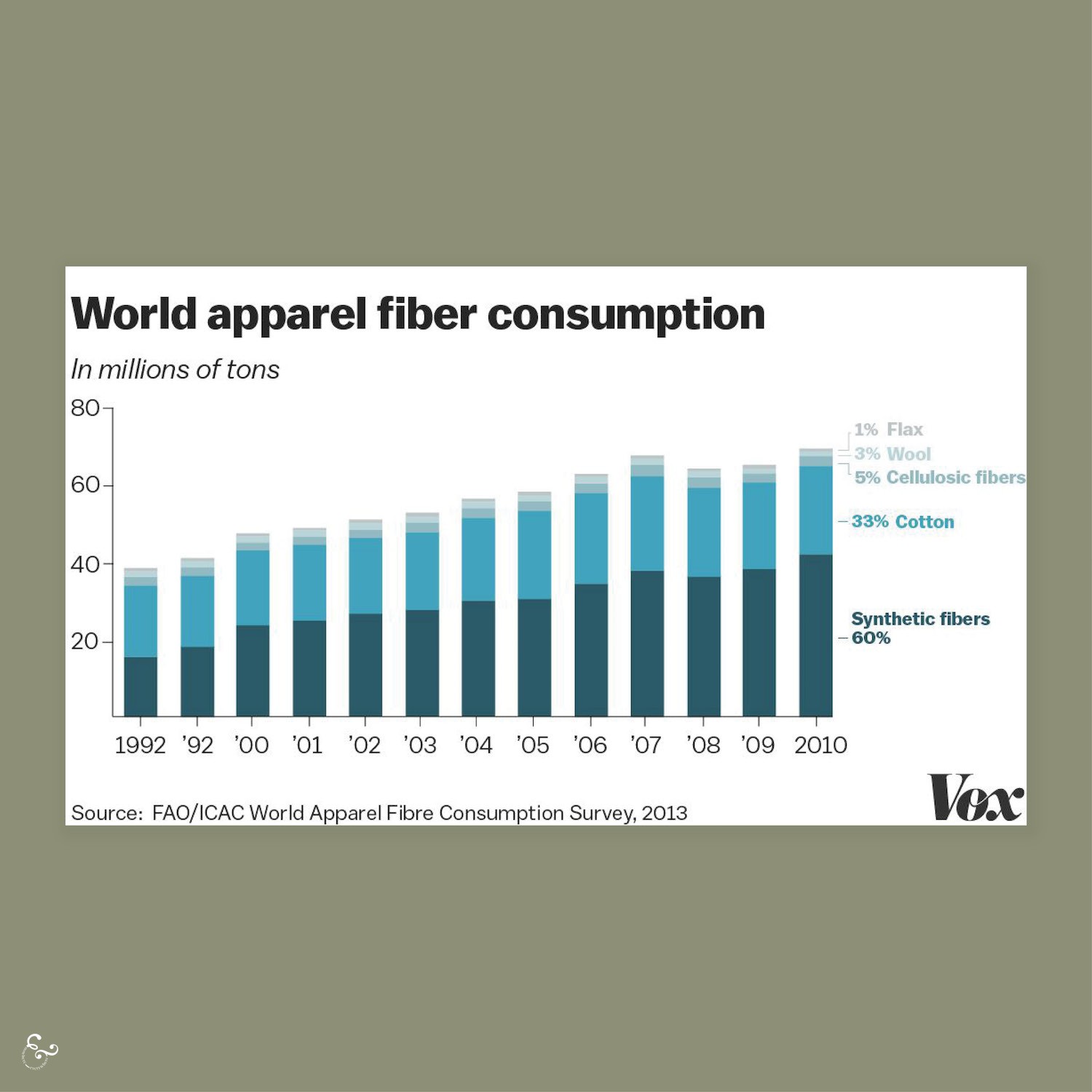Microfibres are one of the most abundant forms of pollution on our planet. They are now found everywhere, include remote uninhabited islands and the Arctic. The clothing, textile and fashion industry is an extremely polluting industry. Fast fashion is causing more clothing waste than ever and comes at a huge cost to the environment. As a world we are obsessed with new clothes; so much that we are constantly dumping them into landfill (and supporting slave labor in the process). ⠀
⠀
The majority of fast fashion textiles shed microfibres when washed that add to the increasing levels of plastic in our beautiful oceans. New studies are uncovering the impacts of this on our marine life and while we know we are also ingesting them, we are not yet clear how it affects us as humans. ⠀
⠀
Repairing clothes, buying secondhand (you can find some real gems at op shops), doing clothes swaps and investing in ethical clothing, products made to last and natural fibres (hemp and linen are great choices) when buying new are some ways to reduce the impact.
- Fix washing machines to capture fibres and reduce emissions.
- Clothing manufacturers nee to start designing textiles to ensure less shedding of fibres.
- We can potentially use special washing bags to prevent release of microfibres inside our machines.
- Use a front loader machine. One study showed top loaders released 7 times more microfibres (Hartline, Bruce, Karba, Sonar, Holden 2016). Top loaders are known to shorten the lifespan of clothing too. Generally top loaders agitate clothing heavily causing more wear and tear which would also release more fibres whereas front loaders work more like a handwashing technique. There would be more technical detail in papers like above. There are also high efficiency top loaders on the market now that mitigate this and extra water usage a little. Front loaders only reduce the problem not eliminate.
- The government can encourage the use of more natural fibres such as hemp and flax through financial support and assistance.
- We can all more consciously consume wherever possible and buy sustainable materials.
- Be careful with our detergents and chemicals we’re using during washing cycles. And wash less!
